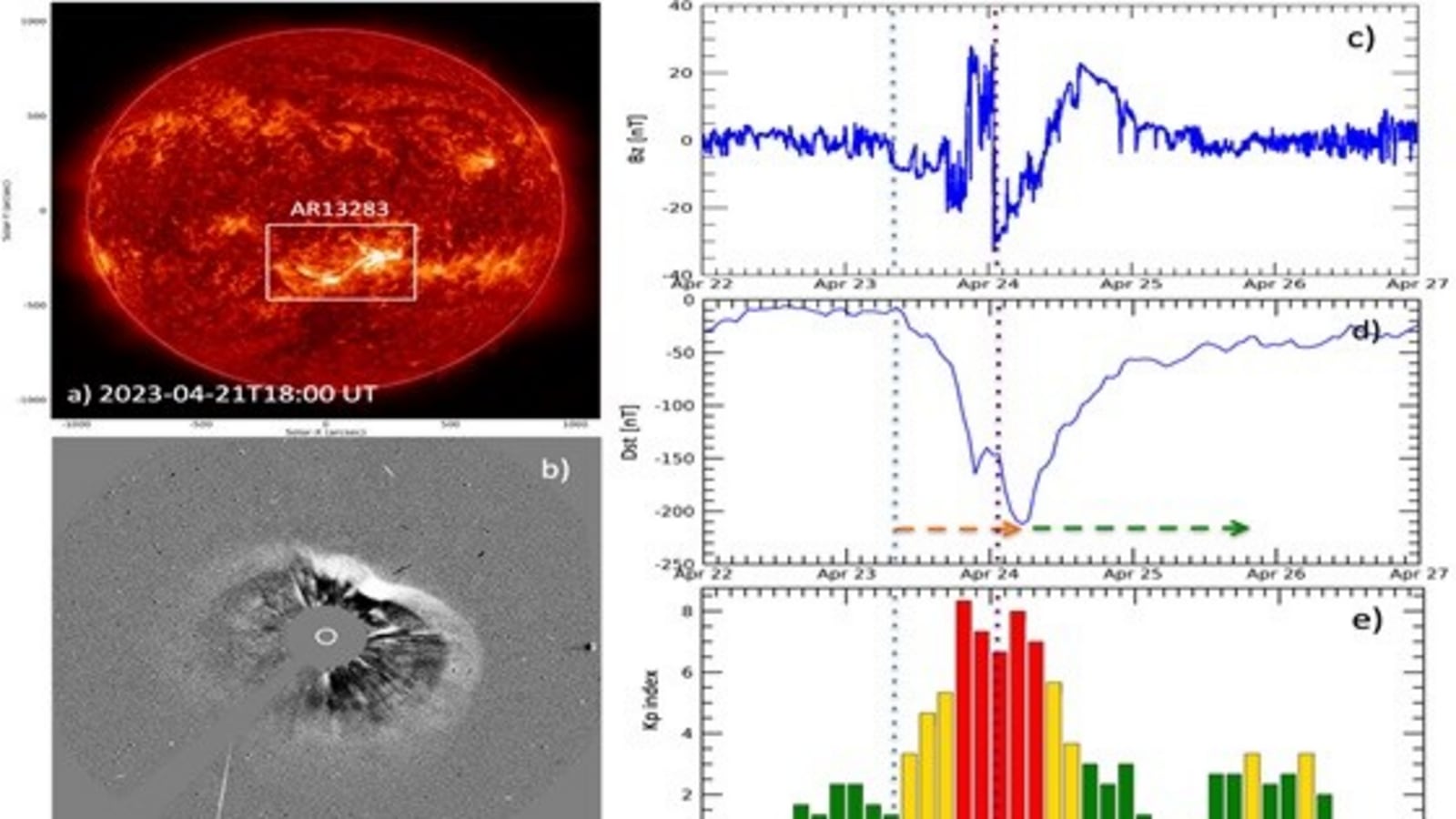How this most intense geomagnetic storm that brought auroras to Ladakh was tracked by Indian astronomers
A recent study traces the origin of a powerful geomagnetic storm in April 2023 back to the Sun, shedding light on the mechanisms behind such phenomena that brought auroras as far South as Ladakh in India.

In late-April 2023, Earth experienced a powerful geomagnetic storm that illuminated the skies with mesmerizing auroras, even in lower latitudes like Ladakh in India. Mostly, these auroras are restricted to the North Pole and northern regions of the world, but this geomagnetic storm was so powerful that it generated auroras that could be seen as far South as in Ladakh. Now, Indian astronomers have traced the origins of this intense storm back to the Sun. Notably, they used data collected from multiple space telescopes operating across different wavelengths.
Coronal mass ejections (CMEs), massive eruptions of ionized gas and magnetic fields from the Sun, are known to trigger geomagnetic storms when they interact with Earth's magnetic field. These storms can have significant impacts on technology both on Earth and in space, making it crucial to understand and predict them.
The most intense geomagnetic storm of solar cycle 25 was sparked by a large-scale CME eruption originating from 'Active Region 13283' near the solar disk center on April 21, 2023. Traveling at speeds of about 1500 km/s, the CME reached Earth's vicinity on April 23, triggering the geomagnetic storm about an hour later. This storm peaked as a "G4 severe" event, leading to stunning auroral displays captured by sky cameras at the Indian Astronomical Observatory in Ladakh, reported the Department of Science & Technology (DST).
Researchers from the Indian Institute of Astrophysics, in a study published in The Astrophysical Journal, identified the solar source of this storm. Dr. P. Vemareddy, the lead author, noted the unexpected intensity of the storm considering its launch from a region of relatively weak magnetic fields on the Sun.
Their analysis revealed that the CME's rotation, influenced by magnetic forces, played a crucial role. The CME structure rotated approximately 56 degrees clockwise during its journey from the Sun to Earth, aligning its magnetic fields southward relative to Earth's magnetic field. This alignment facilitated effective interaction with Earth's magnetic field, leading to the intense geomagnetic storm.
The study underscores the importance of understanding CMEs' complete picture, including their magnetic structure and evolutionary mechanisms. With the launch of the Aditya-L1 space observatory, researchers anticipate gaining further insights into CME behavior. The Visible Emission Line Coronagraph (VELC) instrument onboard Aditya-L1 will provide vital imaging observations near the Sun, aiding in better understanding CME dynamics from their origin to their impact on Earth's space environment.
Catch all the Latest Tech News, Mobile News, Laptop News, Gaming news, Wearables News , How To News, also keep up with us on Whatsapp channel,Twitter, Facebook, Google News, and Instagram. For our latest videos, subscribe to our YouTube channel.
































